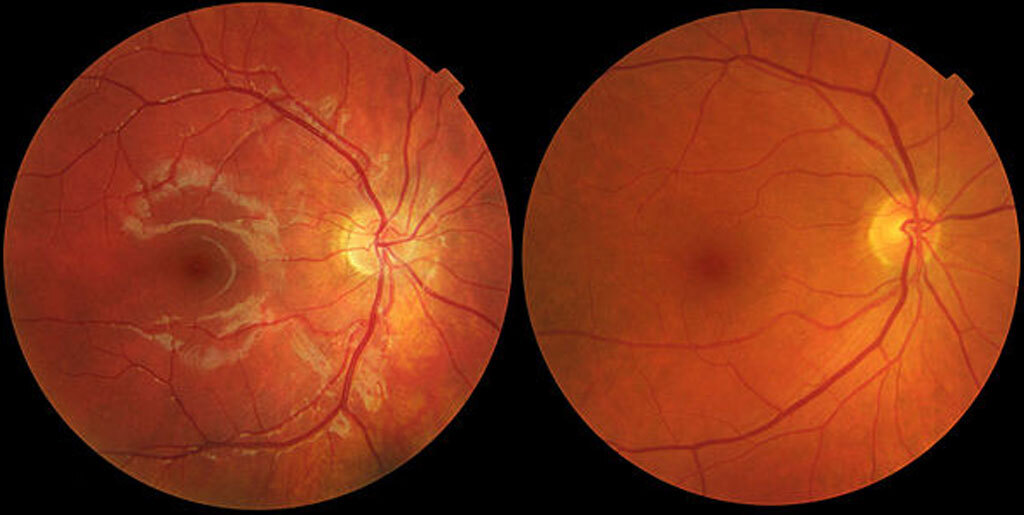 (212) 861-9797
(212) 861-9797
 (212) 861-9797
(212) 861-9797
The leading cause of blindness and severe visual impairments in the world is age-related macular degeneration or AMD. About 11 million people in the U.S. have at least some degree of AMD. Whether you fall into this category or have another retinal disease or eye condition, there’s a good chance that the latest laser technology, such as photodynamic therapy, can prevent or at least slow the progression of the disease. The best laser eye surgery doctors work at Vitreous Retina Macula Consultants of New York. The eye experts at VRMNY have an exceptional reputation for effective treatments with lasers. Call today for a consultation.
Photodynamic therapy, also referred to as PDT, combines two techniques in a minimally invasive laser eye surgical procedure. It uses a cold laser and a light sensitive drug like Verteporfin that gets activated when the laser is aimed at it. Using this method, problems associated with abnormal blood vessels in your retina or the underlying choroid layer get resolved.
Your eyes and vision change over time. People in their early-to-mid-40s may complain of blurry vision or double vision. An estimated 64 percent of Americans suffer from some form of ocular disorder or another vision problem.
The easiest way to maintain your eye health is by getting routine eye examinations. The best in class laser eye surgery doctors at Vitreous Retina Macula Consultants of New York (VRMNY) are proficient with the latest laser technology. They have offices conveniently located in Brooklyn, Manhattan and Westchester.
Dr. Englebert has gone above and beyond every appointment! The most thorough and well educated eye Dr. I’ve seen out of many… Very patient and answers all questions for the best plan of care. Thank you!
Age-related macular degeneration (AMD) is a condition in which you experience rapid growth of abnormal blood vessels in the choroid layer of your retina. These blood vessels are extremely fragile and prone to leaking blood into the surrounding tissues. This condition, known as wet AMD, can damage your retina, causing scarring and eventually significant vision impairment. Photodynamic therapy eye treatment only works on wet AMD.

Other types of eye problems the laser eye surgery is effective for include:
The main goal of photodynamic therapy is to reduce the leaks from the abnormal blood vessels and eliminate any fluid retention. The treatment usually starts with eyedrops to dilate your eyes. You may even need to undergo more diagnostic imaging tests to confirm the diagnosis and ensure there are no other underlying issues. To get the right light sensitive drug dose, your doctor may take your body measurements. Once the preparatory phase is complete:
One of the biggest advantages of the photodynamic therapy is its lack of heat. Because the laser doesn’t use heat, your doctor has little chance of accidentally damaging your retina. Other benefits include:
Immediately after the laser eye surgery, your vision is going to be blurry due to the eyedrops you received. You need someone to take you home after the laser surgery. Also, since the drug is light sensitive, you have to avoid direct sunlight and bright lights for the next 48 hours. It’s advisable to wear sunglasses and a wide brimmed hat.
While photodynamic therapy can’t bring back vision you already lost, it can help preserve your remaining eyesight. Certain eye problems, however, do tend to come back, especially if you are diabetic. That’s why you need to keep coming back for follow-up examinations for a dye test to check the blood vessels in your retina and choroid.
Studies show that getting the PDT treatment early on minimizes the risks of losing your vision. The highly rated doctors at Vitreous Retina Macula Consultants of New York provide exceptional care for a wide range of conditions affecting your eyes, including:
Contact the nearest VRMNY office today for an evaluation with the best laser eye surgery doctor in NYC for you and your family.
Let us help you enjoy your life
Call: (212) 861-9797To Speak With An Appointment Coordinator Now